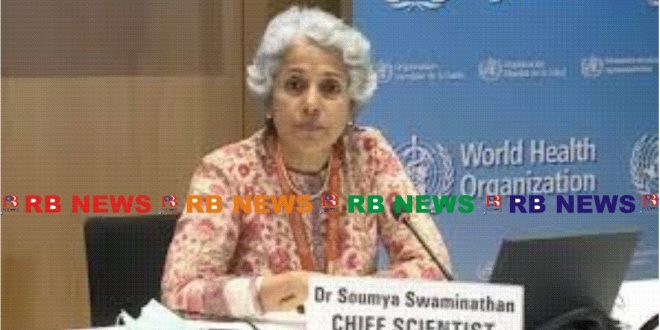Former World Health Organization chief scientist Dr. Soumya Swaminathan said that there is no need to panic about Human Metapneumovirus (HMPV). “It is a well-known virus that causes respiratory infections, its symptoms are mostly mild,” she said in a post on X. Swaminathan also urged people to take the usual precautions taken for cold symptoms, such as wearing a mask, washing hands, etc.
Instructed people
Making people aware, she said that “Instead of panicking, we should all take common precautions when we have a cold. We should wear a mask, wash hands, avoid crowds, consult a doctor if there are severe symptoms.” The assurance of the former World Health Organization scientist came after three infants in Karnataka and Gujarat tested positive for the virus on Monday in India. The first case of HMPV was reported in India just a few days ago.
Two of the three cases were detected in Karnataka through routine surveillance of multiple respiratory viral pathogens by the Indian Council of Medical Research (ICMR). None of the patients had any history of international travel.
No need to panic about the virus
HMPV is a respiratory virus that has recently spread in China and has caught the world’s attention. It is a viral pathogen that can cause respiratory infections in people of all age groups. Union Health Minister Jagat Prakash Nadda has said that the Health Ministry is monitoring the spread of the virus in China. Trying to allay fears, he stressed that it is “not a new virus and there is no need to panic.”
This is not a new virus
Earlier, the Health Ministry had stressed that HMPV is already in circulation globally, including India, and cases of respiratory illnesses associated with it have been reported in various countries. There has been no unusual increase in cases of Influenza-like Illness (ILI) or Severe Acute Respiratory Illness (SARI) in India. HMPV was first discovered in the Netherlands in 2001 and is a virus belonging to the Paramyxoviridae family. It is closely related to the respiratory syncytial virus. It spreads through respiratory droplets released by coughing or sneezing, as well as by touching contaminated surfaces or by direct contact with infected individuals.
 RB News World Latest News
RB News World Latest News






